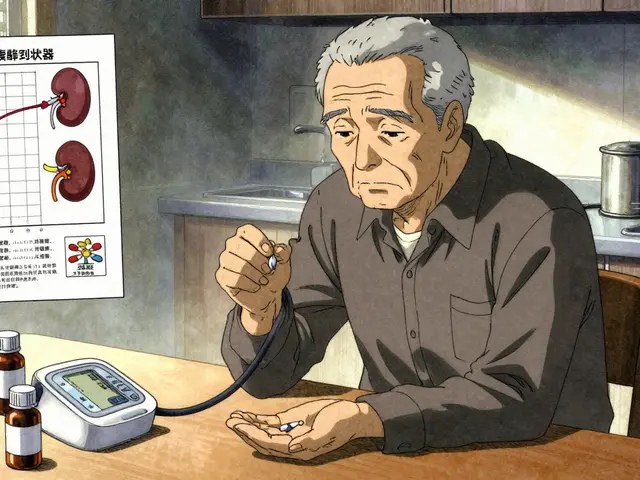Rifampin Interactions – What You Need to Know
If you’ve been prescribed rifampin, chances are you’re treating a serious infection like TB or a stubborn staph infection. Rifampin works by speeding up your liver’s enzyme system, which can change how other drugs behave in your body. That’s why knowing the interactions matters – it can prevent loss of effect, unexpected side effects, or even dangerous situations.
Below you’ll find the most common culprits that clash with rifampin and easy steps to keep everything running smoothly. Think of this as a quick cheat‑sheet you can glance at before you fill your next prescription.
Common Medications That Clash With Rifampin
Warfarin (Coumadin): Rifampin lowers warfarin levels, so blood clotting may go up. If you’re on a blood thinner, ask your doctor to check INR more often and adjust the dose.
Oral contraceptives: Birth control pills rely on steady hormone levels. Rifampin can make them less effective, raising pregnancy risk. Use a backup method like condoms while taking rifampin.
Antiretrovirals (e.g., protease inhibitors): Many HIV meds are broken down by the same liver enzymes that rifampin speeds up. This often means lower drug levels and reduced viral control. Your doctor may switch to a different antiretroviral or change doses.
Antidepressants such as sertraline, fluoxetine: Rifampin can speed up their clearance, making you feel the meds wear off sooner. Watch for mood changes and tell your prescriber if symptoms return.
Statins (especially simvastatin): Some cholesterol drugs become less potent with rifampin, while others may increase risk of muscle pain. Your doctor might pick a statin that’s less affected, like pravastatin.
These are the big ones, but many other meds can be touched by rifampin. Always hand your pharmacist a list of everything you take – prescription, over‑the‑counter, and herbal.
Food and Lifestyle Tips When Taking Rifampin
Avoid grapefruit juice: While rifampin already pushes liver enzymes hard, grapefruit can add extra confusion for some drugs. Skipping the juice keeps enzyme activity more predictable.
Watch vitamin K if you’re on warfarin: Leafy greens (spinach, kale) are high in vitamin K and can swing INR numbers. With rifampin already messing with warfarin, steady intake of these foods helps your doctor keep the dose right.
Stay hydrated: Rifampin can turn urine orange or reddish – that’s normal and not a sign of blood loss. Drinking plenty of water clears it out faster and reduces any stomach upset.
Timing matters: Take rifampin on an empty stomach, usually 30 minutes before breakfast, unless your doctor tells you otherwise. This improves absorption and lessens the chance that food will interfere with other meds.
If you notice new symptoms – like unusual bruising, sudden mood shifts, or a change in how well birth control works – call your healthcare provider right away. Early tweaks prevent bigger problems later.
Bottom line: rifampin is powerful, but its enzyme‑boosting effect means you need to keep an eye on what else you’re taking and eating. By checking with your pharmacist, using backup contraception, and staying consistent with foods that affect blood thinners, you can stay safe while the drug does its job.
Keep this guide handy, share it with anyone who also uses rifampin, and don’t hesitate to ask questions at each doctor visit. Your health stays on track when you know what to watch for.

Rifampin: Understanding Interactions and Risks to Stay Safe
Rifampin is a commonly prescribed antibiotic, but it comes with a range of potential drug interactions and side effects. Understanding these interactions is crucial for safe use, whether taken for tuberculosis or other infections. Being mindful of what medications and supplements you combine with Rifampin can help prevent unwanted complications. Here’s a guide to help you stay informed.
read more




